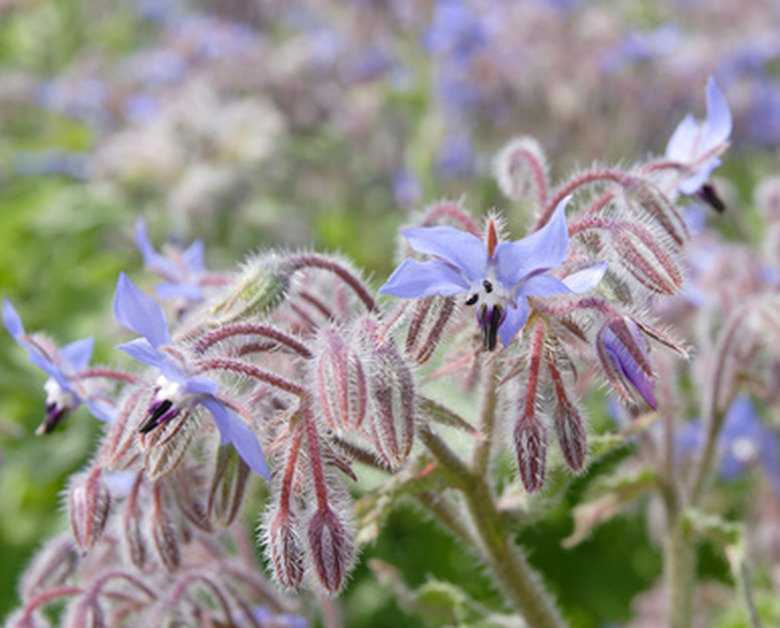How To Transplant Borage
Borage plants are useful for many purposes. The leaves can be cooked like spinach. The roots can be used to flavor wine. Medicinally, the plant is used for colds, coughs or as an eyewash. The sky blue and pink flowers can jazz up your garden and then be made into candy. Borage is typically planted directly into a garden site and doesn't usually respond well to being transplanted. However, if you have no other option, you can successfully transplant borage as long as it is done with special care to not harm the roots.
- Borage plants are useful for many purposes.
- The leaves can be cooked like spinach.
Step 1
Harden off your borage plants if you are moving them from indoors to outdoors by putting them outside for a few hours. Increase the amount of time they are outdoors each day over a period of 10 days.
Step 2
Select an area with well-drained soil and full sun to transplant your borage to. Make sure the area is protected from wind by transplanting borage near a wall or structure to break the wind. Borage plants can blow around easily.
Step 3
Mix compost into the top 4 to 6 inches of soil so that your borage has plenty of nutrients to help it avoid shock when it is transplanted.
Step 4
Dig around your plant at about 2 to 3 inches from the base of the plant to remove it from the ground or pot. Dig to a depth of about 3 to 4 inches. Borage has shallow roots. Remove the roots with as much soil as possible to prevent disturbing the roots.
- Harden off your borage plants if you are moving them from indoors to outdoors by putting them outside for a few hours.
- Mix compost into the top 4 to 6 inches of soil so that your borage has plenty of nutrients to help it avoid shock when it is transplanted.
Step 5
Dig a hole that is about 4 inches deep and 3 inches wide in your garden area where you would like to transplant your first borage plant.
Step 6
Place the root ball of one of your borage plants into the hole you dug so that your plant is positioned upright. Cover the roots of your plant with soil to secure your plant in place. Pat the soil firmly around the base of your plant.
Step 7
Space each borage plant a foot apart in your garden area. Water the soil until it is moist around your plants. Continue to water young plants daily to keep the soil moist.
- Dig a hole that is about 4 inches deep and 3 inches wide in your garden area where you would like to transplant your first borage plant.
- Cover the roots of your plant with soil to secure your plant in place.
Tip
You can reduce the potential of damaging your borage plant's roots by starting plants in peat pots. Peat pots can be transplanted with the plant so roots aren't disturbed. Its best to transplant borage plants when they are young to reduce root damage.
Things Needed
- Borage plant
- Compost
- Shovel
